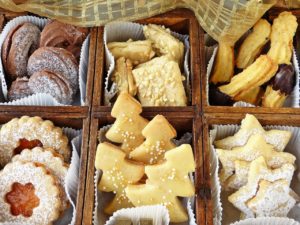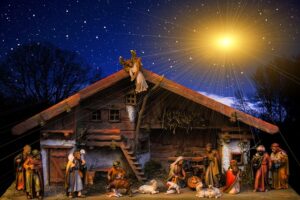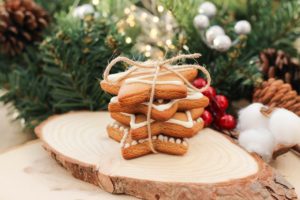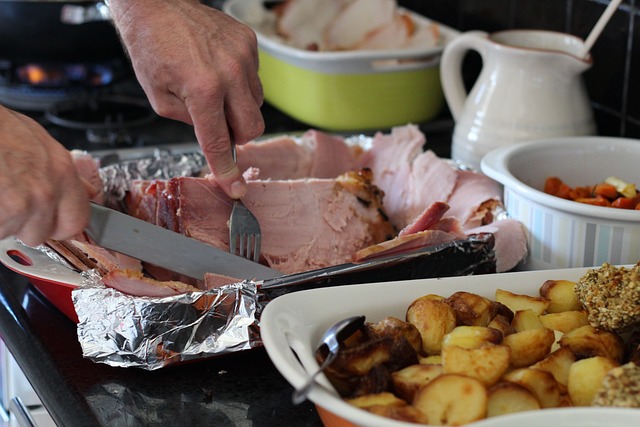Gammon
Gammon is ham that has been cured or smoked like bacon. It is the hind leg of pork after it has been cured by dry-salting or brining, and may or may not be smoked. Kaufland in Germany occasionally sells Gammon as “Kassler Schinken geräuchert” or “Kassler Braten”
Christmas Gammon
- 1 smoked ham
- 1 onion, peeled and quartered
- 2 carrots, peeled and diced
- 3 celery sticks, diced
- 2 bay leaves
- 5 whole cloves
- 5 black peppercorns
- 30 whole cloves for decoration
- 45ml honey
- 50g red candied cherries
- 4 tinned pineapple rings
- Place the ham, onion, carrots, celery, bay leaves, 5 cloves and peppercorns in a large pot.
- Cover it with warm water. Bring to the boil and boil for 50 minutes per kilogram of meat.
- Let it cool
- Heat the oven to 230 Degrees Celcius
- Take the ham out of the liquid and remove the skin. Keep a layer of fat on the meat.
- Cut a diamond pattern into the layer of fat and insert a clove in every diamond
- Place the ham on a baking sheet and brush with honey
- Bake in the oven for 15 minutes or until golden brown
- Baste the ham every now and again with honey
- Decorate with ham and cherries (put a cherry in each pineapple circle)
Related content

German Christmas Recipes
Baking cookies for Christmas is what childhood memories are made of. We will list some websites here where you can find authentic Christmas recipes. Typical

German Christmas Traditions
St. Nicholas Day St Nicholas Day, known as Nikolaustag in Germany, is celebrated on the 6th of December. Children leave a pair of cleaned boots

Traditional South African Christmas Recipes
A selection of traditional South African Christmas recipes. You are most welcome to share your recipes with us via the link below. Click here to



You must be logged in to post a comment.